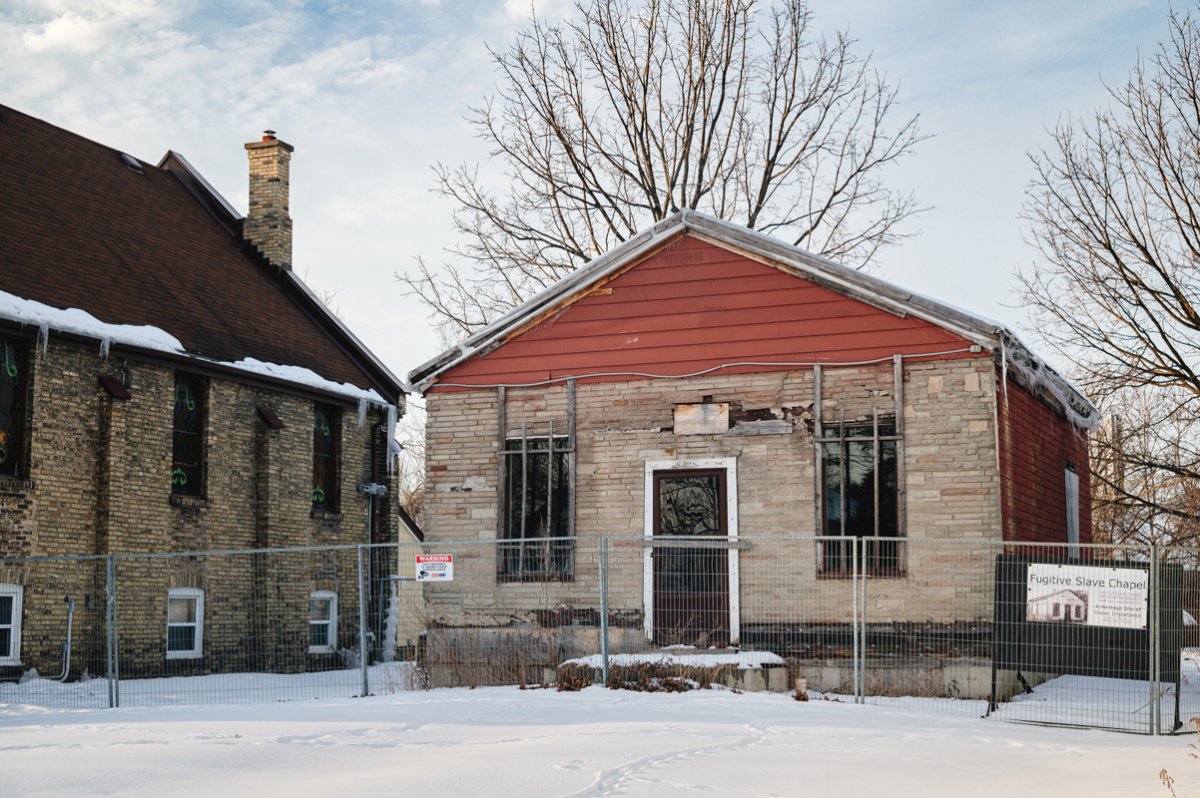London’s historic Fugitive Slave Chapel is the subject of a new documentary film set to be screened later this month.

The film’s debut, scheduled for Feb. 18 at London Public Library’s Wolf Performance Hall, is one of several events lined up in the coming weeks in the city for Black History Month.
The documentary, directed by filmmaker and actor Anthony Sherwood, will dive into the chapel’s history, including its connection to the Underground Railroad, and chronicle the more recent community-led efforts to save the structure for future generations.
Sherwood has interviewed a number of people connected to the chapel, including those who worked to save it from the wrecking ball a decade ago and who worked to relocate it to Fanshawe Pioneer Village (FPV) in November 2022, said Carl Cadogan, chair of the London Black History Coordinating Committee.
“He’s been chronicling all that, and he’s premiering the documentary on the 18th…. I spoke to him this week, he’s excited about it,” Cadogan said.
“We’re going to have a bit of a reception, we’re going to have the film, so there’ll be question and answers as well. Some of the folks who’ve been involved from the very beginning will be there. So we’re hoping that it will be a great event.”
- Posters promoting ‘Steal From Loblaws Day’ are circulating. How did we get here?
- Video shows Ontario police sharing Trudeau’s location with protester, investigation launched
- Canadian food banks are on the brink: ‘This is not a sustainable situation’
- Solar eclipse eye damage: More than 160 cases reported in Ontario, Quebec
After months of fundraising and planning, the 174-year-old chapel was slowly moved by flatbed truck to FPV in November from its previous home on Grey Street, marking the third time in less than a decade that it had been uprooted and relocated.
Cadogan said the chapel is currently being restored with the help of community donations raised as part of a fundraising campaign launched early last year. As of this week, roughly $475,000 has been raised, he said.
“The work has actually started on the restoration. Part of it is just really reinforcing the structure, it’s a (near-200-year-old) wooden structure,” he said.
“We’re hoping that by late spring, early summer we’ll have kind of the official opening of the chapel. We have a committee that’s working on some of the educational aspect, the programming of the chapel, and we’re excited about where it’s gone to this point.”
Cadogan says it’s possible that the documentary may be screened again prior to the reopening, but he notes nothing has been confirmed yet.
Originally the African Methodist Episcopal Church, the chapel was first erected at 275 Thames St. in the early 1850s, where it served as a sanctuary for African Americans who fled slavery through the Underground Railroad and who settled in what is now London’s SoHo neighbourhood.
Land speculation resulting from the Great Western Railway in the 1850s brought wealth to the area, making it the richest Black community in Canada, according to the London Free Press.
In 1856, the chapel became the British Methodist Episcopal Church, and was replaced 13 years later by a new building on Grey Street, according to the London Public Library. The former chapel remained on Thames Street, serving as a private residence for decades, and then as a storage site by a now-defunct transportation company, according to a city report.
In 2013, the building was threatened with demolition by the company, which looked to expand, and a grassroots effort helped relocate the chapel to Grey Street in November 2014, next door to the church that had replaced it in 1869.
In August 2021, the chapel’s former owner, the British Methodist Episcopal Church of Canada, began talks with FPV to gift it to the organization for preservation and education.
FPV officials have said the museum is working with members of London’s Black community to “develop interpretation which will include the history of the building and London’s involvement in the Underground Railroad, as well as commemorating the region’s diverse Black histories.”
Donations are still being collected to help cover additional restoration expenses and the development of the interpretation plan, according to FPV.









Comments